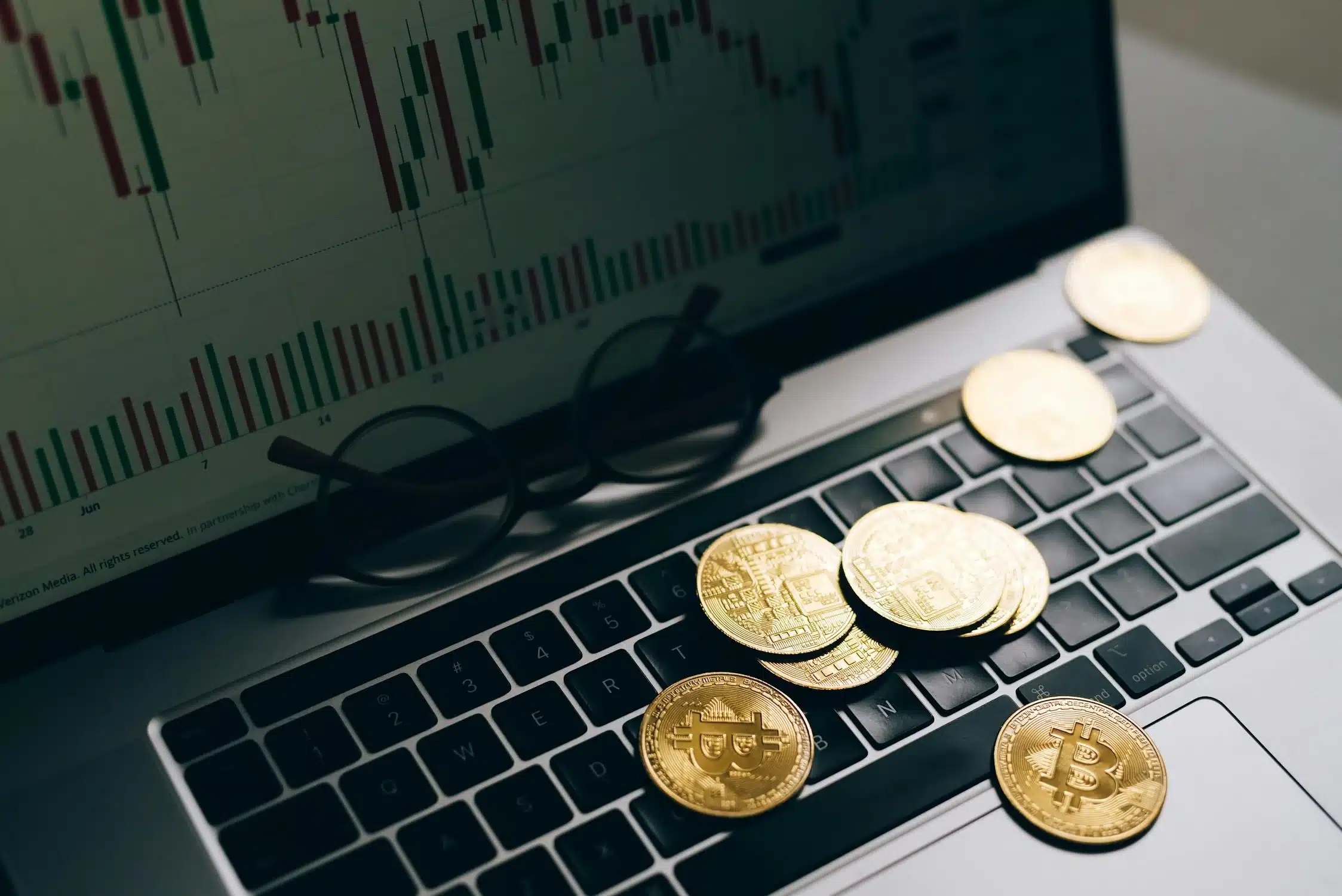
Laptop with Bitcoin chart on-screen among piles of Bitcoin. Bitcoin trading concept. 3D rendering
From the sands of antiquity when traders carved their wares out of stone to the neon-lit consumerist jungle of today, the art of transferring value has been at the heart of human progress. Just as the abacus gave way to calculators, the staid financial institutions are poised to be disrupted by the force of Blockchain technology.
In this article, we explore how Blockchain and its derivatives are spearheading a silent revolution in the way we think about, and execute, digital asset transfers.
What is Blockchain Technology?

In its simplest form, Blockchain is a technology that allows digital information to be recorded and distributed but not edited. Think of a digital ledger shared across a network of computers – a ‘chain’ of data blocks envisaged to be unbreakable.
By design, Blockchains are inherently resistant to modification of the data. Once recorded, the data in any given block cannot be altered retroactively without the alteration of all subsequent blocks, which requires the consensus of the network majority.
Beyond Bitcoin: Applications of Blockchain

Most discussions about Blockchain begin with Bitcoin, but this is only the tip of the iceberg. Blockchain technology has the potential to be used in a myriad of sectors and applications, revolutionising everything from voting systems to supply chains.
The hallmark feature of Blockchain is its transparency and security, which ensures that the ledger cannot be altered or misused. This has caught the attention of not just tech enthusiasts but also large enterprises looking to mitigate fraud and bring efficiency to their operations.
FAQs on Blockchain and Digital Asset Transfers

Q: Is Blockchain just for cryptocurrencies?
A: No, although it was popularised by Bitcoin, Blockchain has far-reaching applications beyond just cryptocurrencies.
Q: How secure is Blockchain for transfers?
A: Blockchain’s cryptographic nature makes it highly secure, as it’s extremely difficult to alter the data once it’s been entered.
Q: Can Blockchain be integrated into existing systems?
A: Yes, many companies are looking at ways to integrate Blockchain into their current infrastructure to enhance security and efficiency.
Blockchain Is Here To Stay!

Blockchain and related technologies have the potential to reshape our financial landscape. However, as with any disruptive technology, there are hurdles to jump and sceptics to convince. But the darling of the digital revolution seems to be here to stay, and its long-term impact on how we transact and transfer digital assets could be profound.
Bigg.ly: Redefining File Sharing with Unmatched Speed and Security
Bigg.ly also stands out as a premier file-sharing website, distinguished by its superior performance and robust security measures. In contrast to its competitors, Bigg.ly offers fast, reliable, and secure file-sharing solutions. The platform seamlessly supports the sharing of files, regardless of size. It also consistently ensuring the highest level of data protection for its users.